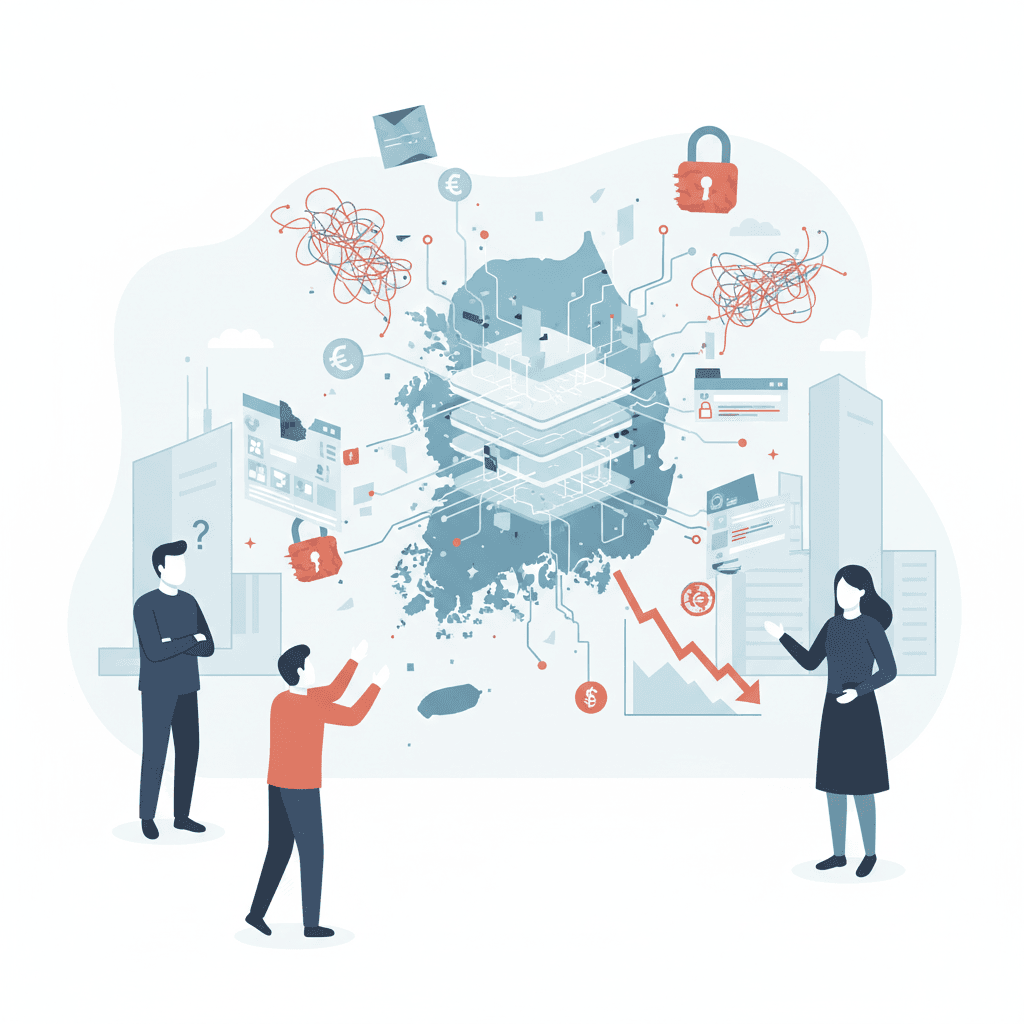South Korea reverses trillion-won AI textbook policy amid backlash.
Teacher and parent outrage, data privacy fears, and technical issues doom South Korea's billion-dollar AI education rollout.
October 17, 2025

In a stunning reversal of a flagship education policy, South Korea has dismantled its ambitious nationwide artificial intelligence textbook program just months after its launch. The project, backed by a hefty investment exceeding a trillion won, was intended to position the country at the forefront of educational technology. However, a deluge of criticism from teachers, parents, and privacy advocates, coupled with concerns over the efficacy and implementation of the technology, has led to the abrupt termination of the program, leaving the future of AI in the nation's classrooms uncertain and prompting a significant backlash from the publishing industry.
The ambitious initiative, championed by the previous administration of Yoon Suk Yeol, was officially halted after the National Assembly passed a bill that redefined official textbooks as exclusively printed books or e-books.[1] This legislative change effectively stripped the AI-powered digital textbooks of their legal status, cutting off public funding and relegating them to the status of supplementary materials.[2][1][3] The move came after a pilot program that saw the AI textbooks introduced in English, math, and computer science classes in some elementary, middle, and high schools.[2][1] The government's initial vision was for a nationwide mandate, but this was quickly scaled back to a voluntary, school-by-school adoption model in the face of widespread opposition.[2][1] Even with this change, adoption rates remained low, with only about 30 percent of schools choosing to use the new technology.[2][1]
A primary driver behind the program's failure was a powerful wave of opposition from educators and parents.[2] Teachers' unions argued that the policy was rushed through without sufficient groundwork and that educators were ill-prepared to use the new systems effectively.[4] A survey by the Korean Teachers and Education Workers' Union in late 2024 revealed that a staggering 98.5 percent of 2,626 teachers felt that the training provided was inadequate for the introduction of AI textbooks.[5][6] This lack of preparedness was a significant concern, with another survey by the Seoul Teachers' Union showing that 94 percent of teachers who attended training sessions did not see the necessity of introducing the AI textbooks.[7][8] Beyond the lack of training, there were reports of technical glitches and an increased workload for both students and teachers, with one student noting that classes were frequently delayed due to technical issues with the textbooks. These problems made it difficult for students to concentrate and keep up with their lessons.
Parents, meanwhile, voiced strong concerns about the potential negative impacts of increased screen time on their children's health and development. A petition opposing the program garnered over 50,000 signatures, with parents expressing worries that the digital devices could harm their children's cognitive development, attention spans, and problem-solving abilities.[9][10][11] Many felt that children were already overly exposed to digital screens and that the government's push for AI textbooks prioritized technology over the holistic well-being of students.[9][10][11] The lack of transparency from the government regarding the implementation of the program and its potential impact on students only served to heighten these anxieties.[12]
Compounding the practical concerns of teachers and parents were serious questions about data privacy. South Korea's Personal Information Protection Commission launched an investigation into the AI digital textbooks and found significant deficiencies in how student data was being handled. The probe revealed a lack of a clear legal basis for the collection and processing of sensitive student learning data. Consent forms were deemed inadequate, and there was a lack of transparency regarding the specifics, purposes, and retention periods for the collected information. The commission issued recommendations for corrective action, but the findings added to the growing unease surrounding the program.
The financial fallout from the program's cancellation has been substantial. While exact figures vary, reports indicate the South Korean government invested around 1.2 trillion won (approximately $850 million) in the development of the AI textbooks. In addition, private publishing companies are estimated to have poured around 800 billion won into creating the digital content, hiring researchers and engineers in anticipation of a nationwide rollout.[13] These companies are now facing a significant crisis, with the sudden policy reversal leaving them with massive losses and the prospect of layoffs and restructuring.[13] Several publishers have reportedly filed lawsuits against the Ministry of Education, citing the financial damage caused by the low adoption rates and the government's abrupt change in policy.[13][2]
The demise of South Korea's AI textbook program serves as a cautionary tale for other nations exploring the integration of artificial intelligence in education. While the potential benefits of personalized learning are significant, this case highlights the critical importance of thorough preparation, stakeholder consultation, and a robust framework for addressing ethical concerns such as data privacy and student well-being. The political divisions that fueled the policy reversal also underscore the challenges of implementing long-term educational reforms in a polarized political climate.[14][15][4] For the South Korean AI industry, the scrapping of the program represents a major setback, undermining trust in government policy and potentially stifling future investment in educational technology.[15] The immediate future of AI in South Korean classrooms remains unclear, with schools that had adopted the technology now facing funding uncertainties and a lack of a clear path forward from the Ministry of Education.[1]
Sources
[1]
[4]
[9]
[10]
[11]
[12]
[13]
[14]
[15]